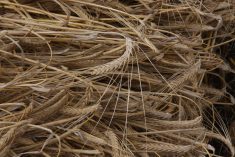Cattle and beef prices fall
Fed cattle prices dropped hard last week as carcass weights rose and consumer demand for beef lagged.
Steers fell more than $3 per hundredweight and heifers almost $2, said Canfax.
Prices Jan. 27 were steers $88.60-$91 per cwt., flat rail $151.80-$153.45. No heifers were reported sold on that day.
Fed cattle in the United States traded steady to $1 (U.S.) lower over the week. Feeders were also steady to $1 lower and calves traded steady to $2 lower.
The Montreal wholesale beef price fell by $5 per cwt. to $163. The Calgary market for this week is mostly steady with handyweight steers at $154-$168, with a top of $174.
Read Also

Vegetable oil stocks are expected to tighten this year
Global vegetable oil stocks are forecast to tighten in the 2025-26 crop year, this should bode well for canola demand.
Canfax expects the fed market will be weaker this week and prices might fall again.
But it noted prices are now equal to the U.S. market, so American buyer interest might pick up.
Canfax advised feedlots to bring down weights, which are 20-25 pounds higher than they were last year at this time.
Cows were barely steady to $2 per cwt. lower in most reported trade. D1,2 cows were $50-$58 with a few grain-fed types hitting $59-$63. Outlook: barely steady.
Feeder cattle were under pressure for most of this week. Steers and heifers weighing 800 lb. and more were the first to get hit, as the dropping fed cattle market pressured feeder prices. Steers weighing 800 lb. for example, were off $2-$4 per cwt. to start the week, but by Jan. 27, most quotes had fallen by $6-$10. This pressure also affected cattle as light as 650 lb.
Alberta feeder sales volume was up 11 percent, at just under 38,000 head.
Canfax expects more pressure on heavier feeders. Even lightweights could drop somewhat if the fed cattle market edges lower.
In stock cow trade, bred cows were $800-$1,470, with mediums at $850-$1,200. Bred heifers were $800-$1,400. Cow-calf pairs were $1,100-$1,550 on few quotes. Outlook: mostly steady.
Big hog delivery expected
Storms disrupted hog marketings in the United States last
week.
Wholesale pork movement remained strong and cutout values were higher. Packers were forced to increase bids to attract needed supplies of hogs.
Iowa-southern Minnesota hog prices (plant top, 51-52 percent lean, live equivalent) increased to $33.75-$43.75 (U.S.) per cwt. on Jan. 28 with a mean of $41.07, up $2.56 from the previous Friday.
Because of storms and cold in the U.S., hog marketings will probably be backed up early this week.
Futures prices of pork bellies dropped sharply based on reports of increased numbers in storage.
But Manitoba Agriculture expects the decline to be short-lived, as the demand for fresh pork bellies from restaurants remains strong.
In Manitoba, the average Index 100 hog prices (including premiums) increased to an estimated $143 per 100 kilograms, up $4 per ckg in response to the higher U.S. markets, despite the higher value of the Canadian dollar.
“I’ve heard the hardest part for most producers is opening the binder.”
















